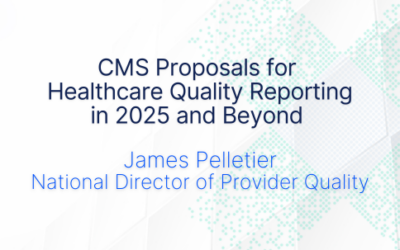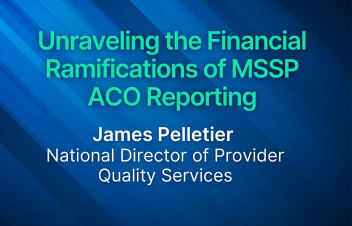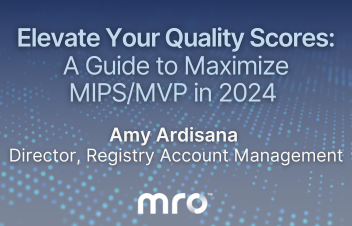I recently sat down with MRO’s chief product officer, Mo Weitnauer, on our podcast show Follow the Medical Record. Mo and I discussed the world of clinical data exchange and its crucial role within the healthcare industry. We then chatted about the need for payers and providers to work together in order to improve patient experience, and more broadly, requester experience. I found the beginning of our conversation very insightful, as Mo explained MRO’s clinical data exchange platform.
Don: I know since joining MRO that you and your team really have been focused on a on some significant projects and one of those projects is the development of MRO’s clinical data exchange platform. So, can you describe what clinical data exchange is, and its relationship to medical records?
Mo: Sure, happy to. So, we launched a new product in June of this year at the HFMA Conference in Nashville. Payer Exchange is a new solution that sits on top of what we’re calling a clinical data exchange platform and I’ll explain both of those for you.
So, I’ll start with the clinical data exchange platform, the words mean something. We are starting to talk about clinical data more broadly than just medical records. We know that a medical record is really the comprehensive set of data that is within an EHR and sometimes actually outside of the EHR. So, we want to exchange the actual data themselves- in that is included the medical record and other clinical data that providers have in their systems. You can think about images and the components of a medical record. We’re really thinking about this holistically.
The second word is exchange, so we know that release of information is really becoming a strategic center for health systems, and we want to make sure that requesters are not merely taking every time, but that there is a real exchange of information between providers and the various requesters that they interact with. What might that be? That might be things like statuses or the use of that record, and at times we are looking at sharing back clinical information to the provider from the various requesters, in the form of care gaps and things like those. Again, we’re starting to think more holistically.
That’s the clinical data exchange. The platform is a technology that will accomplish a couple of things. One is that it’s going to serve as the digital front door for MRO. What that means is we’re automating and digitizing how requests and the actual delivery of the record happens between MRO and the various requesters. The second bit is you can sort of think of it as the police officer who is directing all of the traffic of the various requests that are coming in and the records that are going out.
We’re digitizing a lot of that effort where we’re looking in and seeing what patient is this request coming for, for what dates of service, who is this request coming from? Are they authorized to get the request? With that process we are ensuring that we’re building it in a scalable way and that it’s digitized so that it introduces as little human error as possible.
Now Payer Exchange is a product that sits on top of that clinical data exchange platform. As I said, it is a fully automated clinical data exchange solution that enables us to really deliver on speed, accuracy, transparency, and security of the entire clinical data exchange process – from digitization starting with intake through the process of directing all the records, the actual retrieval of the record, from the EHR, the packaging and delivery, and lastly performing the quality control processes that have to take place, all in an effort to deliver the record.
So, we’re very excited about all the development that we’ve done at MRO on Payer Exchange and our clinical data exchange platform, and there’ll be more to come.
We then discussed the benefits of digitizing the release of information process, specifically when it comes to payer requests for Risk Adjustments. As we continued our conversation, we started discussing wider use cases of satisfying increasingly large volumes of requests in all healthcare settings – specifically to better continuity of care.
Mo: You know, with Payer Exchange, we’re starting with Risk Adjustment because that’s where the biggest pain today is. I imagine you know that Medicare Advantage, for the first time, enrollment in Medicare Advantage is going to surpass Medicare fee for service, which means that there will be more people enrolled in Medicare Advantage plans than there are in traditional Medicare.
And so, what that means for providers is that there’s just a whole lot more requests for Risk Adjustment, and for HEDIS than they have ever seen. I haven’t seen anything that indicates that’s going to slow down.
And then the second piece that I want talk about is that while we’re focused on Risk Adjustments, in the future we’ll be looking at patient requests. We’ll also be looking at continuity of care so we know that providers have to deliver requests or medical records for different uses. So, as we look at, let’s say patient requests, patients are rightfully taking back their power over their medical information. There is much more heightened attention to sensitive information and what types of records are being released, right? We want to ensure, even as we’re digitizing these requests through Payer Exchange, that we’re still looking at things like self-pay. We do not want to release records that a patient does not intend to be released when it comes to sensitive information like HIV, or some reproductive health items, or mental health. We want to make sure that we are controlling the quality output and not releasing information that is not intended to be released by the patient, and their provider.
And then lastly, there’s other solutions MRO offers to a plethora of different types of providers.
Our release of information services, which we’re calling Release Exchange is really that full-service solution that’s been around for 20 years and we just continue to improve upon it, build new technology, automate elements of it so that we’re really delivering that high quality disclosure integrity that’s accurate.
Right now, as you mentioned, providers are not all created equal. We serve health system providers, ambulatory providers, and we serve some specialty providers in groups. They all have different needs, and our solution is flexible enough that we’ll be able to automate and also configure it for all those different needs.
I do want to make another plug for one other new solution that we’ve launched at MRO, our ACO solution. So, some providers have banded together and formed accountable care organizations, and we know that as those ACOs enter into risk-based arrangements with payers, they need to be able to manage all the reporting and clinical data required for their MIPS program, or just to improve the quality.
So, MRO continues to evolve. We’re really accelerating clinical data exchange much more broadly. We are looking at other ways to really holistically serve the health system market.


